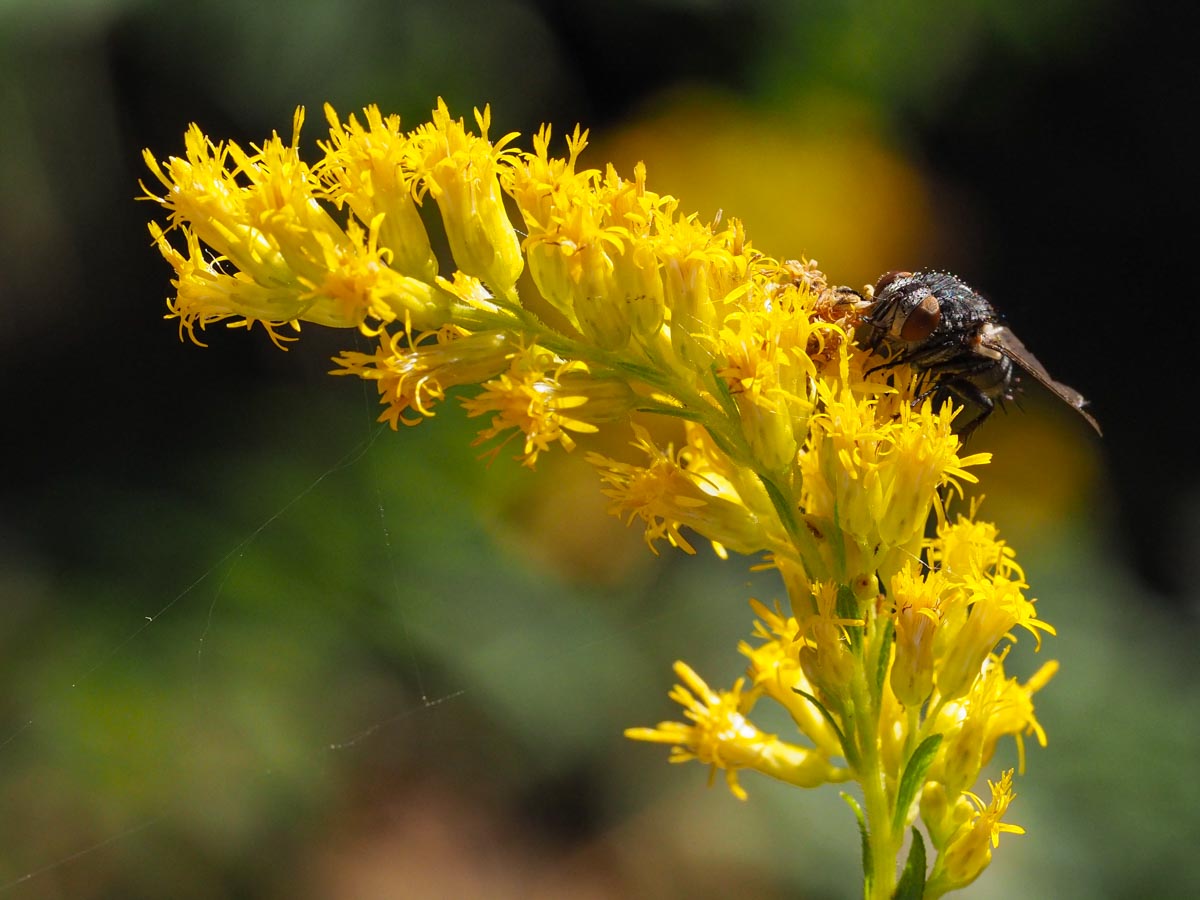At this time of year, I have several species of goldenrod flowering in my yard. Whenever I look at them, they are full of pollinators, including this fly. They are one of the few flowers left now, so provide one last source of pollen and nectar for the remaining insects. They often get the blame for seasonal allergies at this time of year, but this is because they have the misfortune of blooming at the same time as ragweed, the real culprit. The sticky, large pollen grains of goldenrod cling to pollinating insects and rarely cause allergies. Ragweed is wind pollinated and the tiny inconspicuous flowers filled with the offending pollen is often overlooked. So, goldenrod is falsely accused though their only crime is guilt by association.
Goldenrods are so important they are considered a keystone species. So many other species depend on them that if they disappeared from a habitat many other species would suffer or even go extinct. They are host plants to caterpillars of many moths and butterflies. Monarch butterflies depend on them to fuel their southern flight to Mexico. Many native bees feed their young on its pollen, and nest and shelter from winter’s cold in the stems. Later in fall, birds will enthusiastically eat their seeds. I allow my plants to remain through winter, not cutting them back until their insect guests emerge in spring.
Another little-known use of goldenrod was to make rubber. Henry Ford helped fund Thomas Edison’s research on rubber alternatives to make his tires. Edison focused on goldenrod since it grows in abundance and produces lots of latex. Though the leaves usually have about 7% rubber, Edison fertilized and cultivated a variety that grew 12 feet tall and had 12% rubber content. Ford gifted Edison a Model T car with tires from goldenrod rubber as a token of appreciation. Edison’s work on goldenrods continued to be researched by the government until a synthetic alternative was developed in the second World War. My father was a chemical engineer and was involved in that research, so maybe if he hadn’t helped develop synthetic rubber, we would all be driving today on goldenrod tires.
